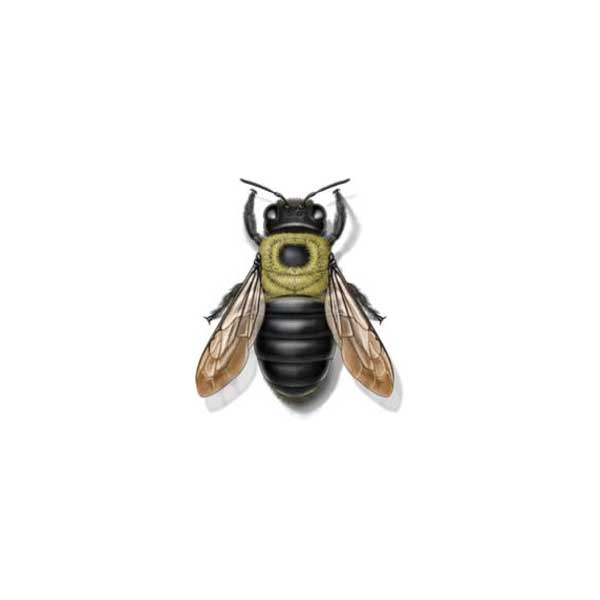Carpenter Bees in Albuquerque NM
Carpenter bees get their name from their habit of boring into wood, creating chambers to raise their young. Despite what many people think, they do not actually eat the wood as they are incapable of digesting it. Along with bumblebee queens, carpenter bees are the largest native bees in the United States–these two bees are often confused for each other. Carpenter bees can be found across the United States. They are active here in Albuquerque and are often seen in residential areas. Carpenter bees tend to target lumber that is dry and weathered when they tunnel through wood.
Carpenter Bee Nests & Habitat
Unlike many types of bees, carpenter bees are mostly solitary. They do not live in nests. Adult carpenter bees overwinter in abandoned nest tunnels, in which they’ve stored limited pollen in order to survive the colder winter months. Bees that survive the winter will emerge in the spring to feed on nectar, mate, and build galleries. They may reuse an already existing gallery or they may excavate new galleries. Their nests can often be found in decks, eaves, fascia boards, doors, railings, window trim, and other wooden surfaces. These types of bees prefer the wood from redwood, cedar, pine, and cypress trees and target wood that is unpainted, untreated, and weathered. However, they occasionally target painted and primed wood as well.
The tunnels they excavate into wooden surfaces are only for nurturing their eggs and young. Nests usually consist of tunnels half of an inch in diameter and 6-10″ deep and may include several brood chambers. They may buzz like saws when constructing nests (hence their name), and there may be piles of sawdust near their tunneling activity.
Carpenter Bee Behaviors & Stings
Carpenter bees may sting when they feel threatened. However, only female carpenter bees possess a stinger. Males, which may appear a bit more aggressive and territorial, cannot sting. The main concern with carpenter bees is the structural damage they can cause. In general, carpenter bees do not pose much of a problem for homes and businesses, but generations of carpenter bees tunneling into the same wood can lead to significant structural damage. Carpenter bees produce broods that return to the same nest location to begin additional nests, creating trouble for those structures and homes with an infestation. Additionally, the larvae developing in homes are attractive to woodpeckers and create more extensive damage to the existing holes while creating unwanted noise.
If you’ve noticed damage from carpenter bees, it’s important to always contact your local bee control company.
Need help with carpenter bees?
We'll call you! Leave your information below.





